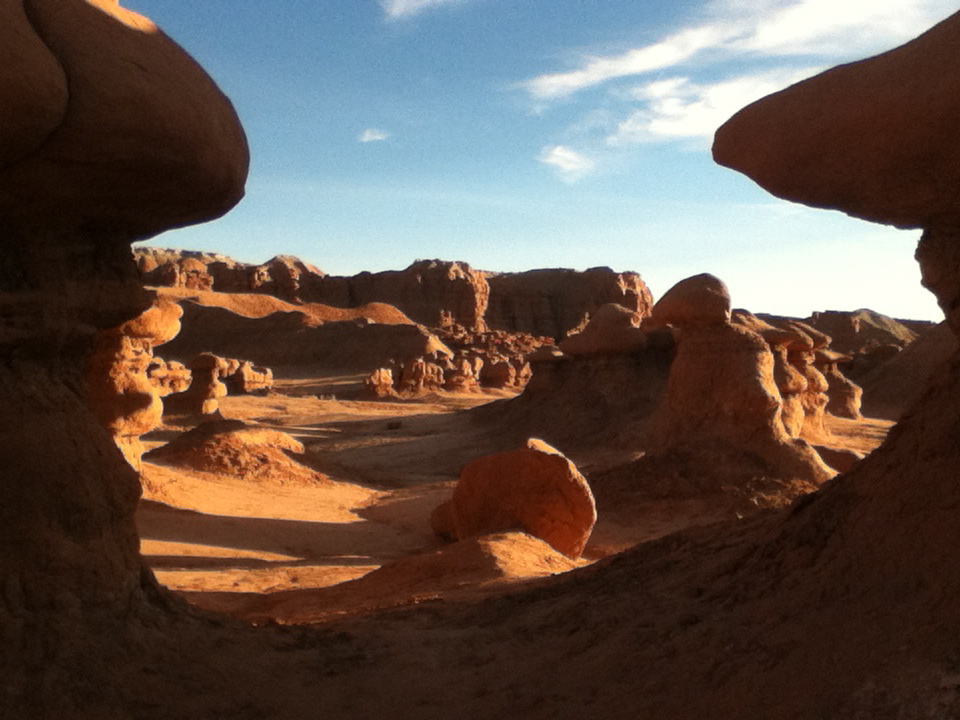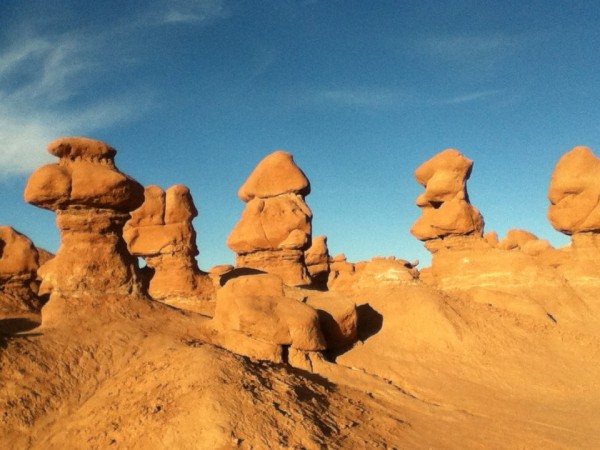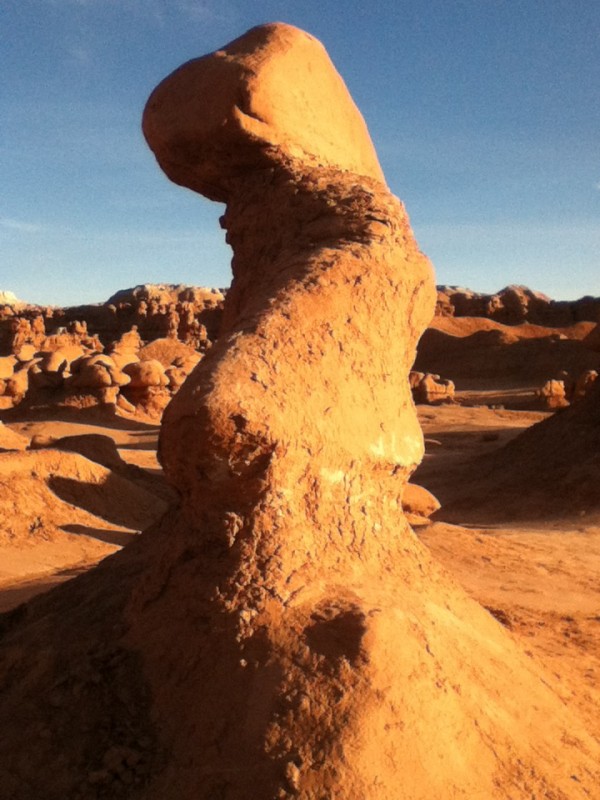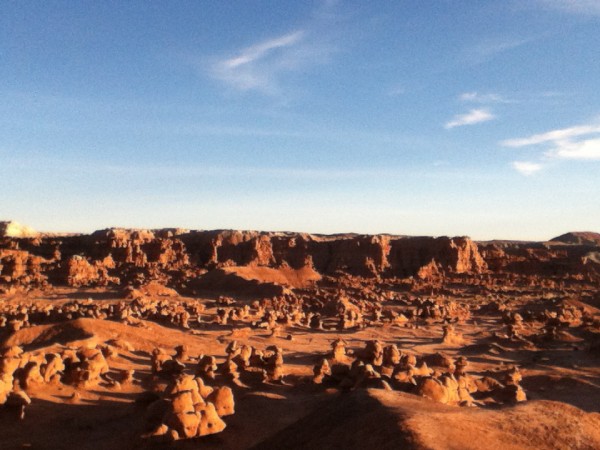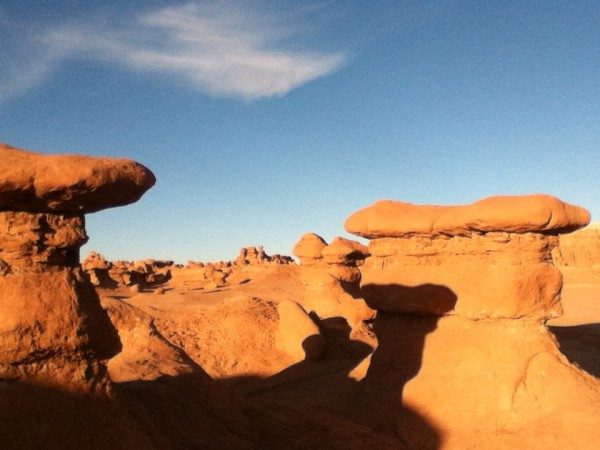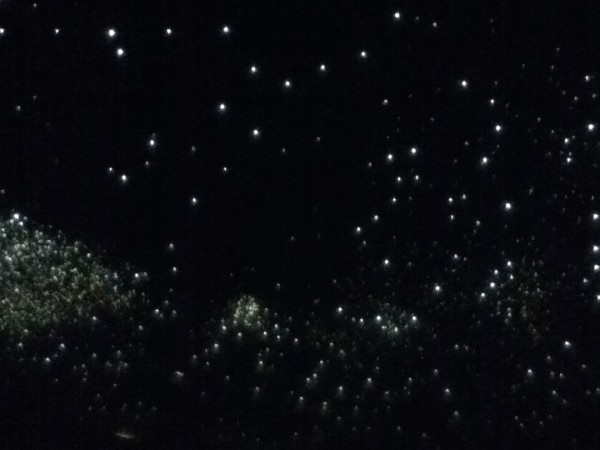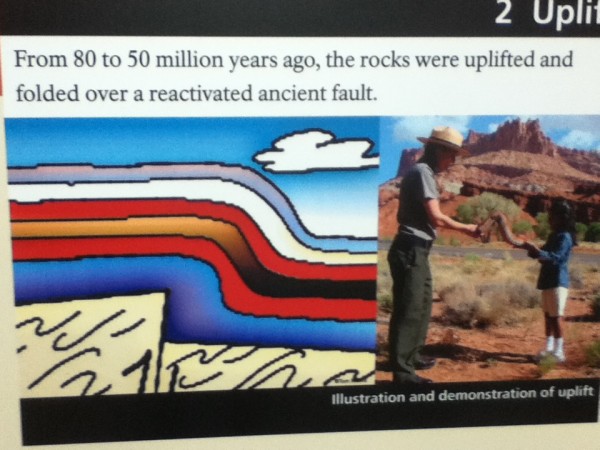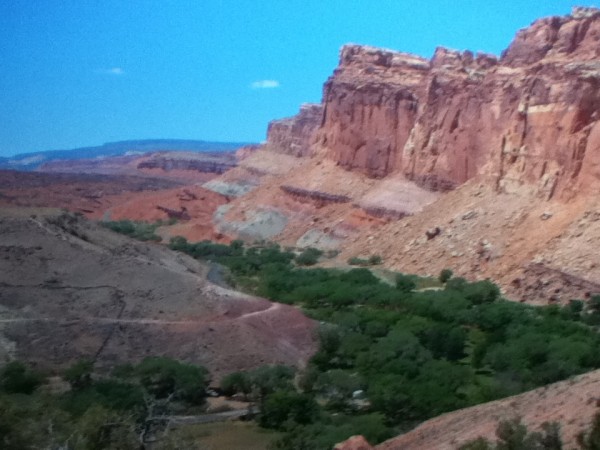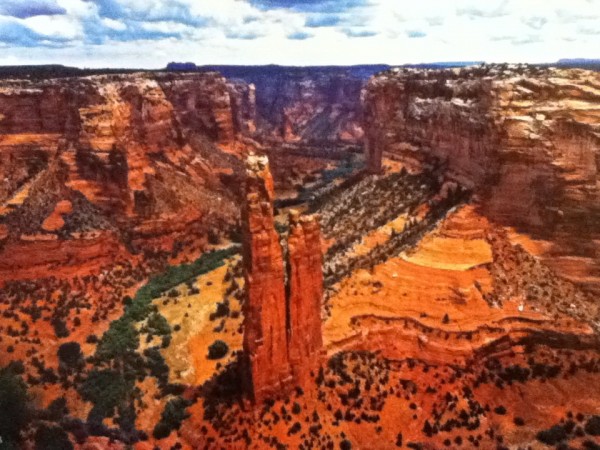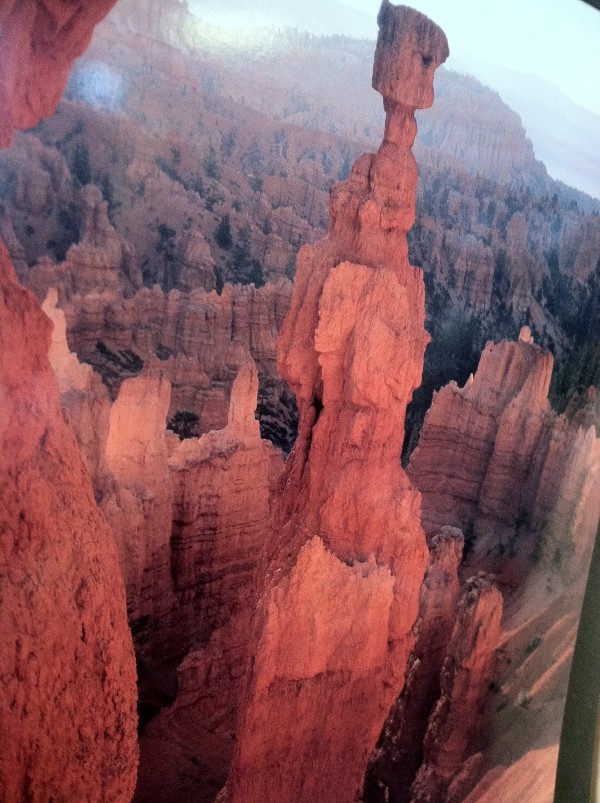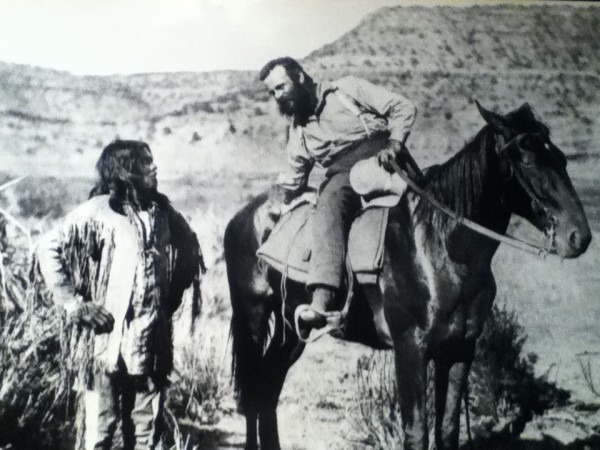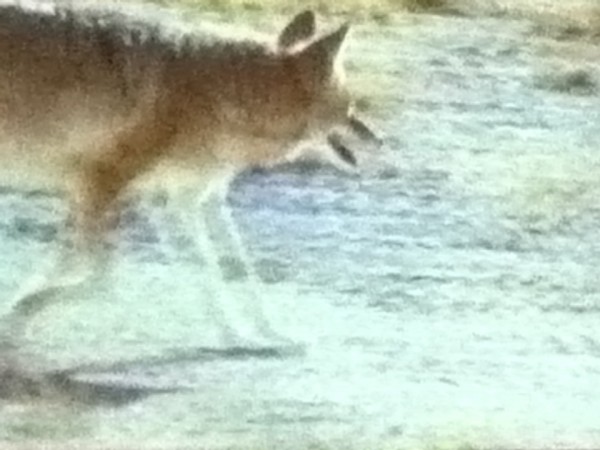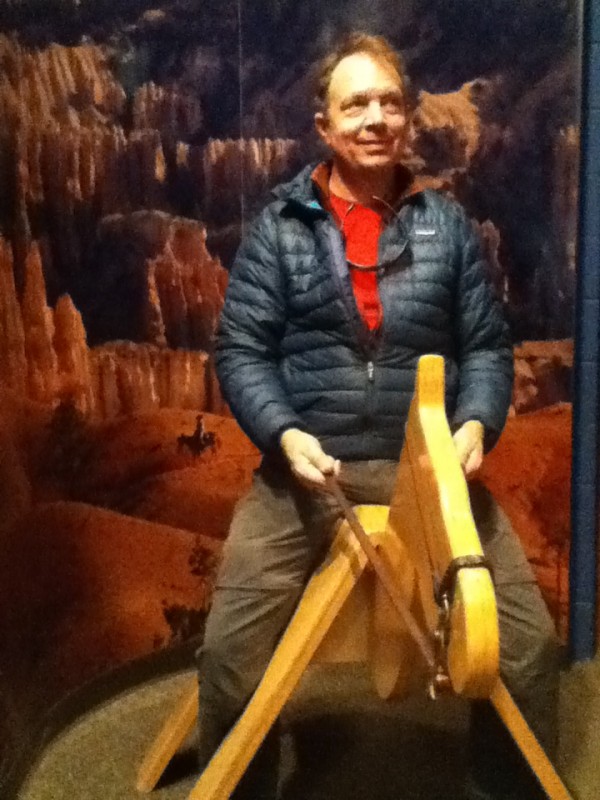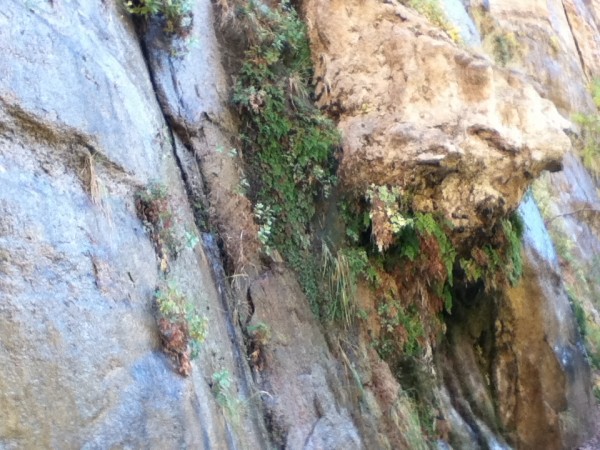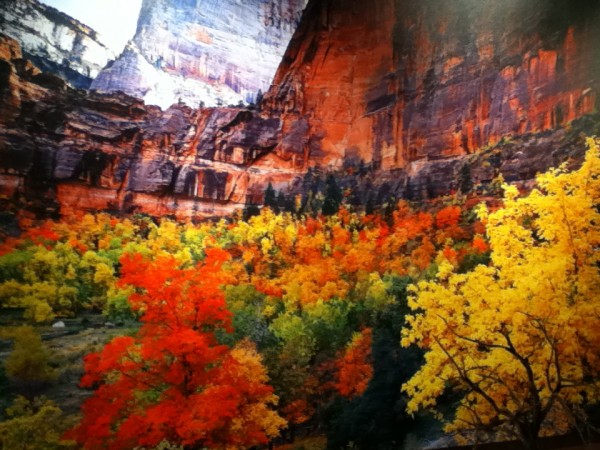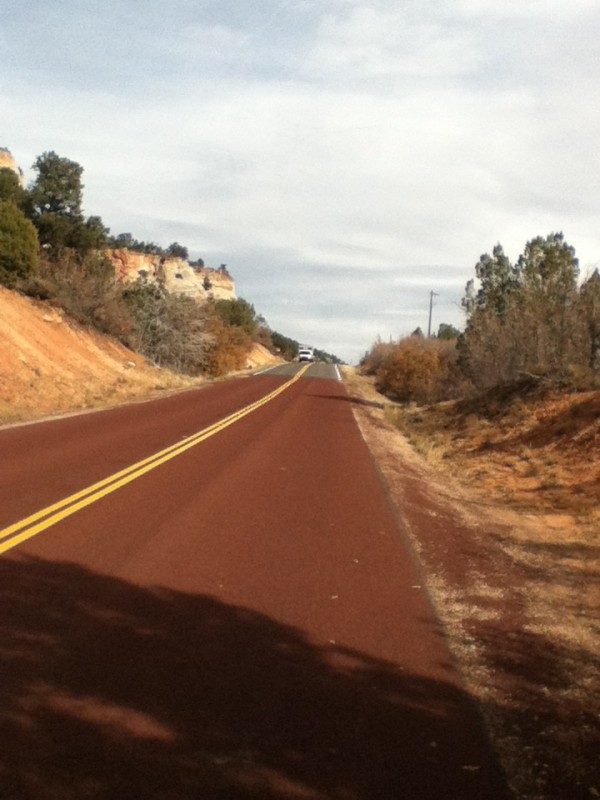This place is sure to hit our top ten list this year. Unlike the tall spires that are only seen from above or below when you are “hoodooing” (like Bush, I reserve the right to make up words…) in Bryce Canyon, these hoodoos, called “Goblins” are human-sized, and mushroom shaped (….isn’t that a gracious way of saying, “phallic”?)
I felt like Alice in Wonderland walking among this valley floor covered with them.
I have loaded up the goblin photos as I could not feature the other remarkable feature in this park, the complete darkness of the night sky here except for stars and planets and meteorites. Located just north of the Cathedral Valley in Capital Reef NP, this area down to Hovenweep is designated, a “dark sky reserve” as it lies more than 200 miles from the light array created by the large cities of Las Vegas and Salt Lake City. Stunning meteor displays allowed me to make LOTS of wishes for the election, global issues, and my son’s continuing success in college. This area was perfect for long evenings of campfire lounging.
The only disruption of our peaceful scene was Lety’s pursuit of nocturnal animals. Breaking 2 leashes and one collar lunging away from the fireside, we bought a choke chain (without sharp prongs) and heavy wire lead. She learned quickly to watch, not to lunge. Good dog. Smart dog. Nothing like a painful outcome to alter one’s behavior.

